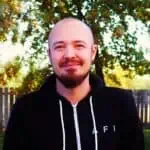Artificial intelligence (AI) was such a big focus of Google’s keynote address at the I/O developers conference this year that the company’s CEO, Sundar Pichai, felt compelled to also post about the technology via Google’s official blog. Pichai wanted to put the focus squarely how Google’s A.I efforts are serving users and to shed some light on AI’s benefits and challenges. Google has, Pichai writes, tried to solve complicated, real-world problems from the very earliest beginnings of the company. To do that, they’ve utilized computer science and human insight, “even as the technology around us forces dramatic change.” The slew of applications, from Google Maps to YouTube, and even Android itself, were borne out of that drive and the move to mobile computing is what really enabled it to take off. However, Pichai notes that the technology world is shifting again – and this time in a more AI-centric direction.
The central theme that cuts across every form of AI is machine learning. Machine learning may be best summed up by examples of how AI uses it to take in information. Cameras can help AI to take in and learn about real world objects in a way similar to how people do when they first start learning precisely what everything is. Then, AI “remembers” those examples, and begins to learn how to recognize different instances of similar objects. Google showed a glimpse of how useful that can be at I/O 2017 with Lens. The same process can be outlined with of sound, thanks to microphones, speakers, and the science of sound waves. It’s important to bear in mind that it isn’t the hardware itself that is seeing or hearing things. Instead, the what is “learning” is a complex array of algorithms and the software those comprise. Since that software often crosses into or exists in the cloud, it can also take references from across the internet and all of the video, audio, images, and text stored there. It’s that machine learning which is forcing Google to “reimagine” its current products and services, causing the company to reexamine old hardware and invent both new hardware and software to keep up with the growing number of use cases. Information pouring out of Google today included news about the company’s second generation Cloud-based Tensor Processing Units (TPUs). The TPUs allow developers to create new uses for AI and machine learning through the Google Cloud Platform, opening up possibilities far beyond what would be possible if only well-funded companies had access to AI capable hardware. The company is also working to simplify the complex process of creating a neural network – the central hub, connecting everything that makes up a machine-learning capable AI – with a new approach called AutoML.
Pichai ends his post with a reminder that machine learning goes well beyond services like Google Assistant, too. Although Google’s AI assistant had a huge day at I/O, machine learning can have an enormous impact on millions of lives outside of simple convenience. The AI being developed by or in partnership with Google can help detect cancer better. It can power robots to perform jobs or tasks that are inherently difficult or dangerous. Moreover, it can assist in finding real people to fill positions that a given organization or company is having trouble finding an employee for. Machine learning can help democratize access to information and present people with new opportunities they may not have otherwise had. There may still be a long way to go before the potential of machine learning or AI can be fully realized, but the industry has taken the first steps and that potential is there.

